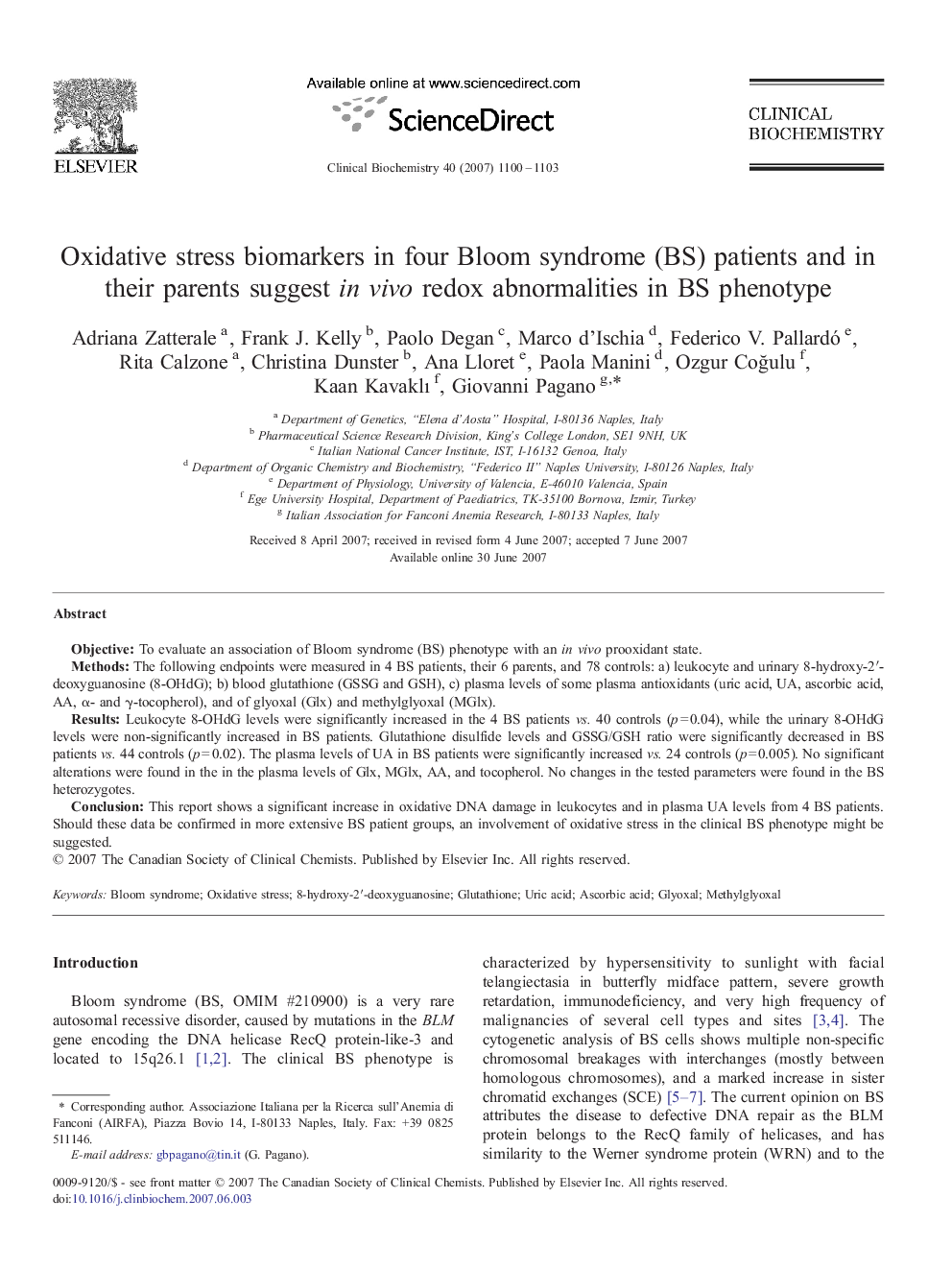| Article ID | Journal | Published Year | Pages | File Type |
|---|---|---|---|---|
| 1970099 | Clinical Biochemistry | 2007 | 4 Pages |
Objective:To evaluate an association of Bloom syndrome (BS) phenotype with an in vivo prooxidant state.Methods:The following endpoints were measured in 4 BS patients, their 6 parents, and 78 controls: a) leukocyte and urinary 8-hydroxy-2′-deoxyguanosine (8-OHdG); b) blood glutathione (GSSG and GSH), c) plasma levels of some plasma antioxidants (uric acid, UA, ascorbic acid, AA, α- and γ-tocopherol), and of glyoxal (Glx) and methylglyoxal (MGlx).Results:Leukocyte 8-OHdG levels were significantly increased in the 4 BS patients vs. 40 controls (p = 0.04), while the urinary 8-OHdG levels were non-significantly increased in BS patients. Glutathione disulfide levels and GSSG/GSH ratio were significantly decreased in BS patients vs. 44 controls (p = 0.02). The plasma levels of UA in BS patients were significantly increased vs. 24 controls (p = 0.005). No significant alterations were found in the in the plasma levels of Glx, MGlx, AA, and tocopherol. No changes in the tested parameters were found in the BS heterozygotes.Conclusion:This report shows a significant increase in oxidative DNA damage in leukocytes and in plasma UA levels from 4 BS patients. Should these data be confirmed in more extensive BS patient groups, an involvement of oxidative stress in the clinical BS phenotype might be suggested.
